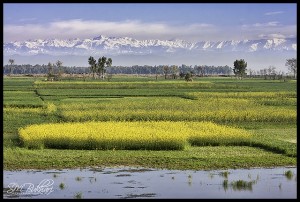Sialkot: Sights & Sounds of the Export Capital of Pakistan Part-2
Wednesday, April 18th, 2012 10:44:42 by Naveed A Bari
Sialkot: Sights & Sounds of the Export Capital of Pakistan Part-2
The Sialkot district is spread over an area of over 5,000 square kilometers, stretching from the Ravi valley on the southeast to the Chenab River on the northwest.
The city, the district headquarters, lies just north of the Aik Nullah and south of the Jammu Hills and is connected by rail with Wazirabad and Jammu and by road with Lahore and Gujranwala.
The northern portion is very fertile; the southern, less fertile, is irrigated by the Upper Chenab Canal. About nine-tenths of the cultivable area is under crops. The chief crops are wheat, barley, rice, corn (maize), millet, and sugarcane. It is a rail
junction and a major trade and processing centre.
The area between Gujranwala and Sialkot is famous for world famous qualities of rice. While traveling on road to Sialkot, one is mesmerized by the aroma of rice paddies on both sides of the road.
Sialkot has the highest per capita exports in Pakistan. Three industries dominate Sialkot – surgical, sports, and leather goods. Sialkot produces over 2000 different surgical instruments for worldwide export. Sialkot was selected to supply footballs for
the 1994 and 1998 World Cups.
It was once famous as a centre for the manufacture of damascened ware and paper, which dates back to the time of the Mughal Emperor Akbar. Sialkoti paper, also known as Man Singhi paper, was famous all over the world.
Now, besides its three chief products, it’s also manufactures processed foods, ceramics, embroidery, ready-made garments and musical Instruments. Almost every product is exported to the world. The textile weaving industry is yet another thriving industry
of Sialkot.
How Sialkot got into the business of its now thriving sports industry?
No one exactly knows, but it is said that during the British rule, a British broke his tennis racquet and, since an immediate replacement was not possible, he asked a local to repair it. The man did a perfect job and the sports goods manufacturing industry
took root in Sialkot. Recorded history of the industry goes back to 1895 when the city started becoming famous for its tennis racquets.
By 1903, cricket bats were being crafted from imported English willow and exported to different parts of British India and beyond. In 1922, one Mr. Syed was awarded the British Empire Export Award for supplying footballs to the British Army. Over the years
the industry grew to include a variety of wood and leather-based sports equipment, and diversified into related industries such as sports apparel and riding equipment and even the Scottish bagpipes.
To be continued…
Tags: India, Kashmir, Nepal, WBOShort URL: https://www.newspakistan.pk/?p=19328


















dear,
i,m rana from laos belong to pakistan.
can i have your telephone number.